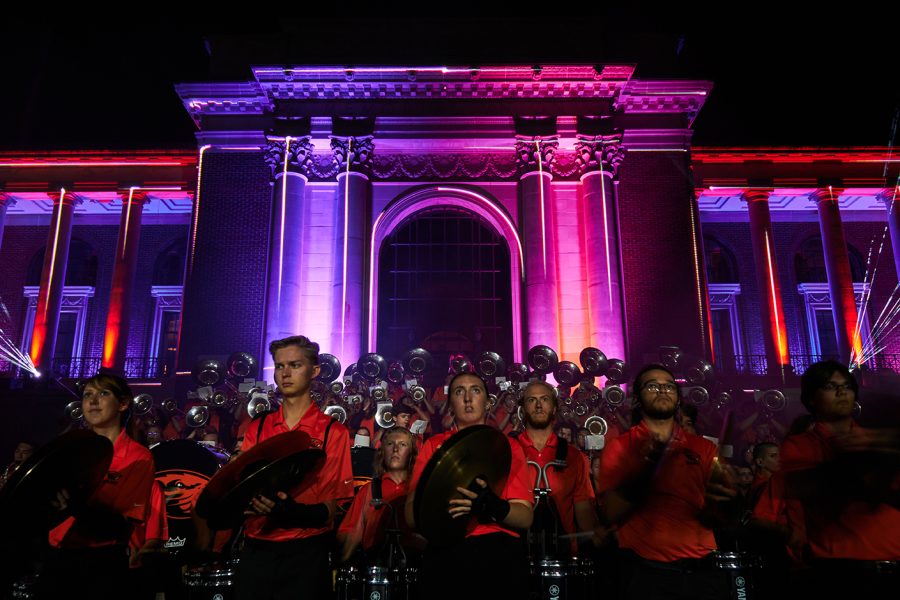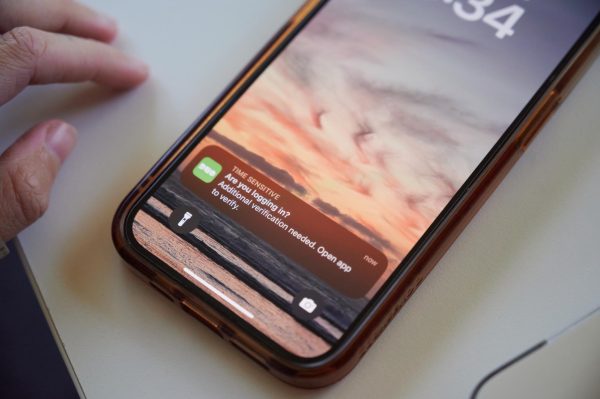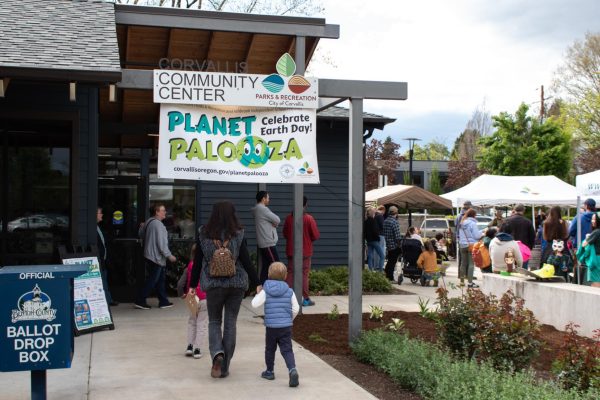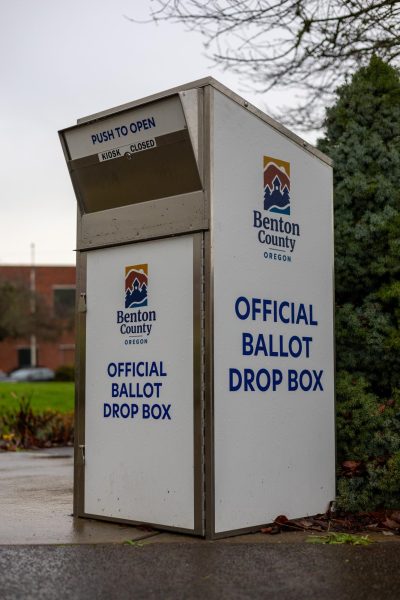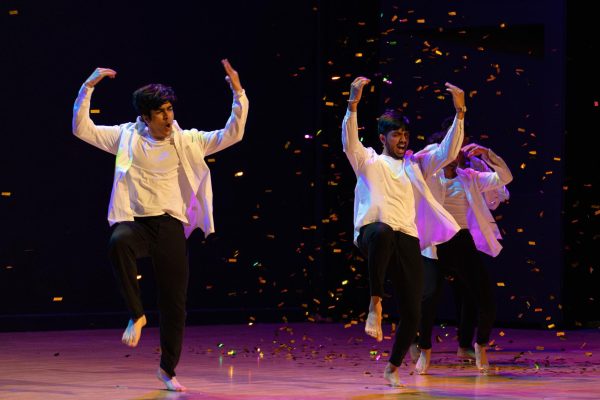Oregon State University’s second philanthropic campaign raises one billion dollars
Photo courtesy of Oregon State University
A rendered aerial view of the Jen-Hsun and Lori Huang Collaborative Innovation Complex to be built on the north end of OSU’s campus near SW Memorial Place and Monroe St.
October 15, 2022
One billion dollars—a year’s in-state tuition at Oregon State University for over 80 thousand students—have already been committed by over 56,000 donors during OSU’s second philanthropic campaign.
OSU’s first campaign led by the OSU Foundation ran from 2004-2014 raised $1.14 billion. This second campaign is a continuation called ‘Believe It: The Campaign for Oregon State University.’
While Believe It is only just being publicly announced today, the campaign has been well underway since it launched in July of 2017.
Friday night marked the launch of the public phase of the fundraiser which included a celebration in a temporary building constructed for the campaign made in the Memorial Union Quad. Over 500 donors, alumni, students, faculty and other stakeholders were present, as multiple announcements were made about fundings.
Included on the list of donors were graphics processing unit producer NVIDIA founder Jen-Hsun Huang and his wife Lori Huang. The Huangs met at OSU as undergraduates, and the two are donating $50 million to help launch a new OSU research center.
The research center, to be named the Jen-Hsun and Lori Huang Collaborative Innovation Complex, is set to open in 2025. It will feature usage of a NVIDIA supercomputer to be used in multiple fields of research including artificial intelligence, materials science and robotics in tackling global issues.
“The Jen-Hsun and Lori Huang Collaborative Innovation Complex at Oregon State University will be much more than a building,” said OSU President Jayathi Murthy. “It will serve as a university-wide promise and as a hub for advancing groundbreaking solutions for the betterment of humanity, the environment and the economy.”
Alongside the NVIDIA supercomputer, the complex will include specialized research laboratories, an extended-reality theater, a robotics and drone playground, as well as a do-it-yourself maker space according to OSU.
The complex is set to be placed between the Lonnie B. Harris Black Cultural Center and the Plageman Student Health Center on campus, replacing the parking lot that is currently there.
“What we’re focused on is, as part of our sustainability plan, to continue to reduce the reliance on students and faculty and staff coming to campus and single occupancy vehicles,” said Vice President of University Relations and Marketing, Steve Clark.
According to Clark, alongside the sustainability plan is to also develop a set of three ‘campus mobility hubs’ that will be placed on Monroe Ave. near Weniger Hall, McNary Hall, and by Goss stadium. They will feature additional bike storage locations, transit stops and drop off points for vehicles.
“We really see these as future benefits to the university where students and faculty and staff can come to where they want to be on campus in a variety of diverse and sustainable ways,” Clark said.
According to Clark this is a $200 million project and $100 million has already been raised by philanthropy. The university is hoping to raise another $25 million through additional philanthropy and businesses and asking for the remaining $75 million from the state legislature through bonding.
“The way bonds work is the process by which the state helps contribute to buildings across the state that are publicly owned, including universities like Oregon State,” Clark said. “We are one of the few universities that actually go to the state and then match or exceed that request in philanthropy.”
Donations are not limited to supporting science, technology, engineering and math departments on campus.
OSU alumni Patricia Valian Reser—yes, like the stadium—has donated $36 million in the past decade alone to fund a 49,000 square-foot arts center.
Reser’s donations include a 2017 $25 million gift dedicated to the center’s development which has already begun construction on the southside of OSU’s campus.
All in all the $1 billion dollars committed to the Believe It campaign is planned to be funneled into multiple different areas of OSU including:
- $460 million for student support, including scholarships, fellowships and experiential learning funds,
- $500 million for faculty positions and academic program support,
- $320 million for new facilities, renovations and equipment,
- $250 million for emerging strategic initiatives,
- $220 million for programmatic support, including outreach and extension programs throughout Oregon and beyond.















































































































